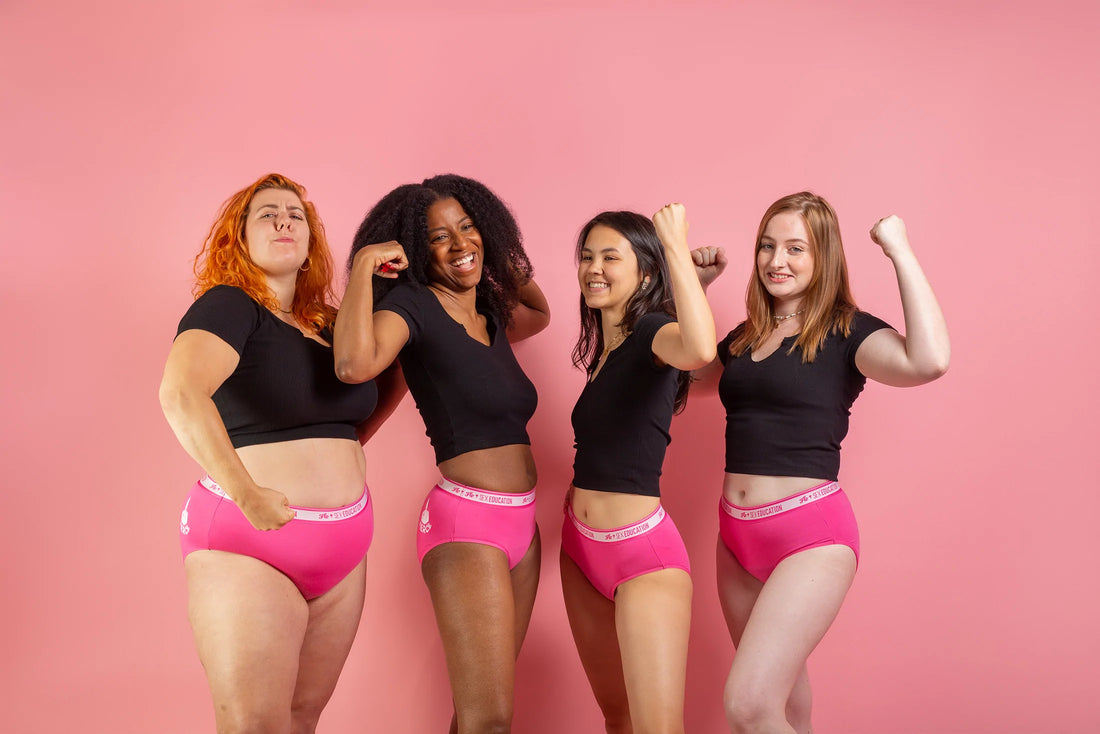If you’ve landed on this blog post it’s probably because you’ve read the recent “Tampons as a source of exposure to metal(loid)s” study from researchers at the University of California, Berkeley. The study and headlines that have followed have been really anxiety inducing and babe, we hear you; nothing is more important than your health. We want this blog to contextualise and help you understand the study, as well as assure you that your Flo tampons are perfectly safe (just as you know and love them to be!).
So, let’s get into it. At Here We Flo we’re champions of any research into women’s health and more specifically, menstrual health, especially because it’s a hugely under researched area. The University of California study highlights the need for period care that is better for our bodies, one of the main reasons our Co-founders Tara and Susan started Here We Flo. Since we began in 2017 our mission has always been to remove the unnecessary chemicals used in mainstream period care products, which is why we’re always transparent with our materials and rigorous with our testing.
When it comes to our period care range, including our Flo Eco-applicator and Non-applicator Tampons, we take a three-step approach to ensure our products are free-from harmful chemicals and always safe for your vagina.
- Oeko-Tex Standard 100 Tested: our tampons (and pads & liners) are tested for over 100 chemicals during the manufacturing process. This includes heavy metals from the study, for example lead and arsenic, of which our testing showed below quantifiable levels of the two metalloids in the sample from our Flo Tampons.
Read more about these tests here.
- GOTS 100% Certified Organic Cotton: the cotton used in our tampons is processed under strict supply chain inspection and without harsh chemicals, bleach, chlorine or dyes.
Read more about this process here.
- Regular independent testing: our manufacturers undertake stringent, frequent safety tests to ensure our tampons are the gold standard for safety you know and expect from Here We Flo.
We do this across our entire range of products, shown here.
Next up, we want to help you to understand the University study, the results and what this means for your health. Most of us don’t read scientific journals every day, so let’s break it down. The study tested 30 tampons from the top 14 brands across the USA, UK & EU, the names of which have not been released. The objective of the study was to identify the concentrations of 16 metalloids in the tampon samples. To do this the samples were passed through acid digestion in a “microwave digestion system” (University of California, July 2024) and then tested for the presence of those metalloids, which were found to be present in all samples. The study concluded: “future research is necessary to replicate our findings and determine whether metals can leach out of tampons and cross the vaginal epithelium into systemic circulation. Our findings point towards the need for regulations requiring the testing of metals in tampons by manufacturers” (University of California, July 2024). A conclusion we’re absolutely in support of at Here We Flo HQ. On top of this we’d call for ingredients like chlorine and bleach to be tested for in period care too!
‘But what does this all mean for me right now?!’, we hear you ask. As we rally for more research on the testing of tampons and all gynae health products, it’s important to listen to the opinion of experts in the field. Dr Jen Gunther, a leading gynaecologist, has published an article “Reassuring Info About Lead and Tampons THEY Didn't Want You to Know” in which she states: “Treating a tampon with nitric acid and baking it for over an hour at 180 C does not replicate what happens in the vagina, so we have no idea if any of these minute amounts of metal can get from a tampon into the vagina or if it can be absorbed into the blood”. She also cites some other studies that begin to explore the presence of metals in tampon-users, however lots more studies are needed. We also need more representative sample sizes, including more tampon brands and all demographics of menstruators. This gap in gynae-health research leaves a blank space for misleading information and click-bait headlines to rule the conversation. Of course, harmful levels of metalloids should not ever be present in tampons, but we need to call for context whilst also calling for change. Dr Jen Gunther in another article “Don't Panic about Lead in Tampons” cites that higher levels of these metalloids have been found in consumables like bottled water and green tea. She goes on to argue that “ideally, we want no arsenic, cadmium, or lead, but the reality is that they’re in the soil and will ultimately creep into all kinds of products”. We need to call on the wider manufacturing and agricultural industries for legislation, as well as making the call within the period care industry.
We hope you’ve reached the end of this blog and feel a little less anxious about tampons again. Our promise to all of our consumers is that we'll always strive for nothing but the best and safest products for your period. We also promise to always champion research and progress in women and menstruators’ health.
Oh, and remember, you’re bloody brilliant for caring about your menstrual health. If you have any more questions please email Hannah on hiya@hereweflo.co



